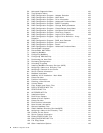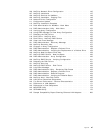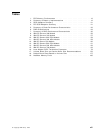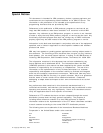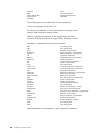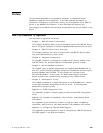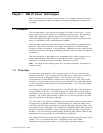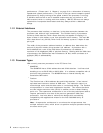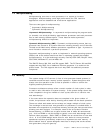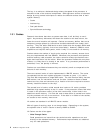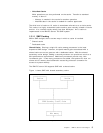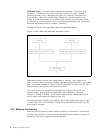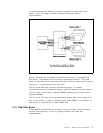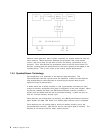
Chapter 1. IBM PC Server Technologies
IBM PC Servers use a variety of technologies. This chapter introduces many of
these technologies and gives examples of system implementations where they
are used.
1.1 Processors
The microprocessor is the central processing unit (CPU) of the server. It is the
place where most of the control and computing functions occur. All operating
system and application program instructions are executed here. Most
information passes through it, whether it is a keyboard stroke, data from a disk
drive, or information from a communication network.
The processor needs data and instructions for each processing operation that it
performs. Data and instructions are loaded from memory into data-storage
locations, known as registers, in the processor. Registers are also used to store
the data that results from each processing operation, until the data is transferred
to memory.
The microprocessor is packaged as an integrated circuit which contains one or
more arithmetic logic units (ALUs), a floating point unit, on-board cache,
registers for holding instructions and data, and control circuitry.
Note: The ALUs and the floating point unit are often collectively referred to as
execution units.
1.1.1 Clock Rate
A fundamental characteristic of all microprocessors is the rate at which they
perform operations. This is called the clock rate and is measured in millions of
cycles per second or Megahertz (MHz). The maximum clock rate of a
microprocessor is determined by how fast the internal logic of the chip can be
switched. As silicon fabrication processes are improved, the integrated devices
on the chip become smaller and can be switched faster. Thus, the clock speed
can be increased.
For example, the Pentium P54C processor in the IBM PC Server 720 operates at
a clock speed of 100 MHz. The P54C is based on a fabrication process where
transistors on the chip have a channel width of .6 microns (a .6 micron BiCMOS
process). The original P5 processor is based on a .8 micron process and could
only be clocked at a maximum of 66 MHz.
The clock rate of the external components can be different from the rate at which
the processor is clocked internally. Clock doubling is a technique used in the
Intel DX2 and DX4 class processors to clock the processor internally faster than
the external logic components. For example, the 486DX2 at 66/33 MHz clocks the
processor internally at 66 MHz, while clocking the external logic components at
33 MHz. This is an efficient systems design technique when faster external logic
components are not available or are prohibitively expensive.
One might think that the faster the clock speed, the faster the performance of the
system. This is not always the case. The speed of the other system
components, such as main memory, can also have a dramatic effect on
Copyright IBM Corp. 1995 1



